

Table of contents
- Characteristics
- Location
- substrate
- hydroponics
- Pour
- Fertilize
- Cut
- multiply
- planting
- repot
- hibernate
- pests
- growth disorders
Originally from tropical climates, Schefflera arboricola has gained great popularity as an office plant in the past. The unusual plant has now been forgotten, although some attributes are particularly interesting for both beginners and advanced users. The Schefflera is easy to care for and robust. It is easy to multiply, acts as an eye-catcher and cleans the air of nicotine and acetone.
Characteristics
- evergreen shrub
- belongs to the Araliaceae family
- original home is in Taiwan and on the island of Hainan
- reaches heights of growth of up to four meters
- Flowers hermaphrodite, inconspicuously colored green-yellow
- Flowering time between July and October
- only flowers in Central Europe under tropical conditions
- variegated varieties: 'Renate', 'Charlotte', 'Samoa Snow' and 'Melanie'
Location
As a tropical plant, Schefflera arboricola has special requirements in terms of light, temperature and wind conditions. It normally grows under the protection of tall jungle giants and knows how to use the diffuse residual light optimally. Therefore, the plant should not be placed on the south window in the apartment. Avoid direct sunlight, because the leaves burn very easily here. Choose a place with less light near a window. A location near the heating is unproblematic for the Schefflera. On the other hand, she does not like drafts or places that are too shady. The plant likes to spend the summer in a bright and wind-protected place on the terrace or balcony. If you observe these needs, your radiant aria will grow splendidly:
- tolerates three to five hours of sun in the morning or evening
- requires minimum temperatures of 15 °C during the day
- at night the thermometer can drop to twelve degrees
- Temperatures below ten degrees damage the plant
A notice:
Light-leaved scheffleras cope better with the sun's rays than dark-leaved varieties.
substrate
Schefflera arboricola thrives in any standard soil. In order to support particularly magnificent and healthy growth, you should avoid using simple potting soil from hardware stores and garden centers. The substrates often do not meet the requirements for water and nutrient regulation and buffering power. The pH value is also crucial for vitality. A value of around 6.0 is ideal. If you mix yourself a good quality substrate, you will get a loose soil that does not compact:
- four parts humus substrate
- two to three parts clay
- half a part of quartz sand
- part pumice, lava granules or lavalite
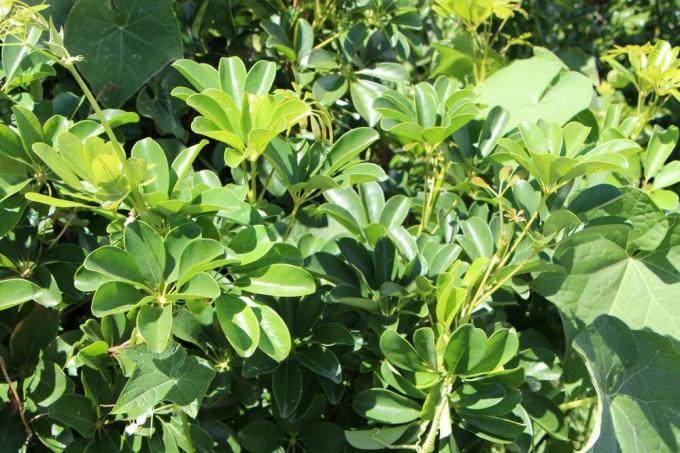
By adding clay you can regulate the pH value. This should be sterilized before use. The mixing ratio of humus substrate to clay is decisive for the pH value. Check the packaging to see which pH value is specified for the respective substrate. With this mixture, the value is between 6.0 and 6.5.
hydroponics
The schefflera is one of the standard plants grown in hydroponics. Here, the tropical plants do not grow in potting soil, but in clay granules or expanded clay. This alternative substrate provides support and stability for the plants. It soaks up water and ensures an optimal water supply. A nutrient solution provides the houseplants with nutrients on a permanent basis. With this variant you benefit from a number of advantages:
- Plants need to be watered less often
- restricted root formation
- repot and cut back less often
Pour
Radiant aralia have a medium water requirement and are happy about a moderately moist soil. Keep the substrate constantly moist in summer. During the winter months, the soil can dry out on the surface between the watering units. The amount of water depends on the size of the pots, the ambient temperature and the amount of light. The larger the pot, the more water the soil can absorb without waterlogging. If your Schefflera arboricola gets sun or is in heated rooms, it needs a little more water than in partially shaded and cool places. You can use these values as a guide:
- water once a week in summer
- water every ten days in winter
- sprinkle with water occasionally
Fertilize
Newly purchased plants are supplied with nutrients, which are used up within the next six to eight weeks. You should then fertilize the Schefflera every seven to 14 days. Use a complete fertilizer that is dosed according to the manufacturer's instructions. When the main growth phase is coming to an end, the fertilization is slowly reduced and finally stopped. If you hibernate your radiant macaw warm, give it extra nutrients every four weeks.
A notice:
If you cultivate the radiant ara in hydroponics, you should regularly supply them with a special fertilizer. Conventional plant fertilizers are too highly concentrated.
Cut

The best time for pruning is early spring, before the new growth phase begins. You should shorten shoots that are too long every year so that the plant gets more light inside. This stimulates the formation of fresh shoots and the plant grows dense and bushy. The vigorous radiant macaw keeps a compact shape and branches out better. Since the woody plants are extremely robust, even a radical pruning does not cause them any problems. Always cut branches just above a bud or directly at the branch fork and proceed as follows:
- Trim shoot tips
- Cut back runners
- Shorten side and main shoots
multiply
Schefflera arboricola is usually propagated by cuttings. The shoots should be about ten centimeters long and have two leaves. Cut off non-lignified shoots just above a node, and then cut off the cutting below the next node. To reduce evaporation, you can cut the leaves in half or roll them up and secure them with a rubber band. If you take the following tips into account, the cuttings will often form their first roots after a month:
- Cultivation in a water glass or planter
- no direct sunlight
- Temperature between 18 and 24 °C
planting
As soon as the cuttings have formed sufficient roots, they are placed in a planter filled with substrate. The original forest plant is cultivated as a houseplant in Central Europe, as it does not survive outdoors due to its requirements. Do not choose a pot that is too large, otherwise the plant will tend to overgrow. The bucket volume should be about 20 percent larger than the volume of the root ball.
repot
Repotting is necessary at the latest when the plant has completely rooted through the substrate. To prevent a lack of space and growth disorders, you should place young scheffleras in a new planter every spring. Older plants can be transplanted every three to five years. After you have taken the plant out of the old pot, the roots are freed from substrate and untangled. Cut back dead and rotten roots. The further procedure is not difficult:
- equip new planter with drainage
- fill up to a third with substrate
- Insert root ball
- fill with humus-rich substrate and press down
- don't forget to pour
Tip:
Alternatively, instead of repotting the plant every year, you can remove and replace the top layer of soil. This gives the Schefflera fresh soil and doesn't outgrow you.
hibernate
In its natural habitat, the Schefflera never rests. However, their growth stagnates in Central Europe, as both light intensity and temperatures decrease in winter. The leaves remain in winter and need sufficient light. If it is too dark in your apartment, you can use energy-saving plant lamps. Additional lighting is not necessary if the plant is in the conservatory or in front of large south-facing windows. The thermometer should not fall below 15 degrees Celsius between October and March. Variegated varieties need a temperature of at least 18 degrees Celsius. The care is reduced and only increased again with the new shoots in spring.
pests
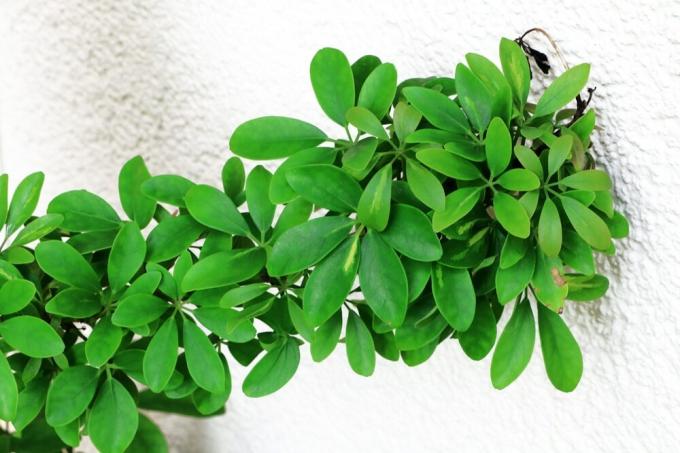
Although the radiant macaw proves to be robust against dry heating air, pest infestation can still occur during the winter months. Check the plants regularly for spider mites and mealybugs or scale insects. The unwanted insects do not stop at almost any houseplant and should be removed with a powerful jet of water. Garlic cloves, lavender plants, and cloves have all been shown to be good preventatives. If you cultivate the plants in the conservatory, you should also watch out for aphids.
growth disorders
If the houseplant gets brown and yellow leaves during the growth phase, which fall off after a short time, the location should be reconsidered. Cold or draughts, as well as a lack of sunlight, can cause leaf fall. Put your plant in a warmer spot near the window and watch it continue to grow. Hobby gardeners often suspect that the leaf fall is the result of a lack of water. However, increased watering does not combat the problem, but rather promotes waterlogging. This can lead to root rot.
 garden editorial
garden editorial I write about everything that interests me in my garden.
Learn more about houseplants
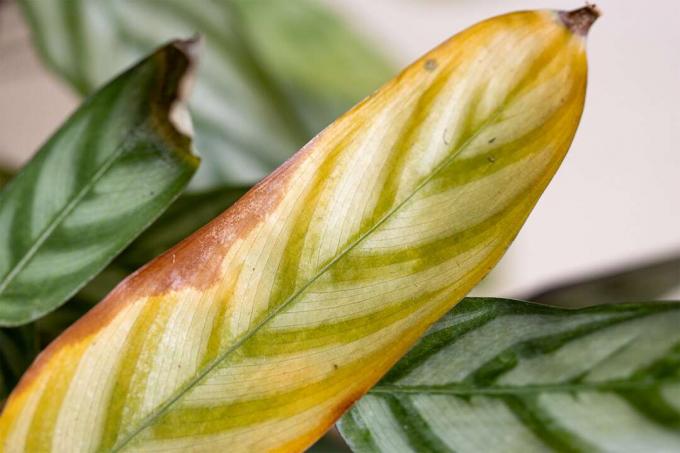
Calathea has yellow leaves: how to save?
When a Coriander (Calathea) gets yellow leaves, the cause is usually a lack of care. In order to save them from dying, a number of countermeasures must be taken, which are described in detail here.

Room bamboo: 13 tips for care
The room bamboo impresses with its compact growth habit and is a densely grown houseplant. The ten most important tips for caring for the sweet grass are compiled for you here.
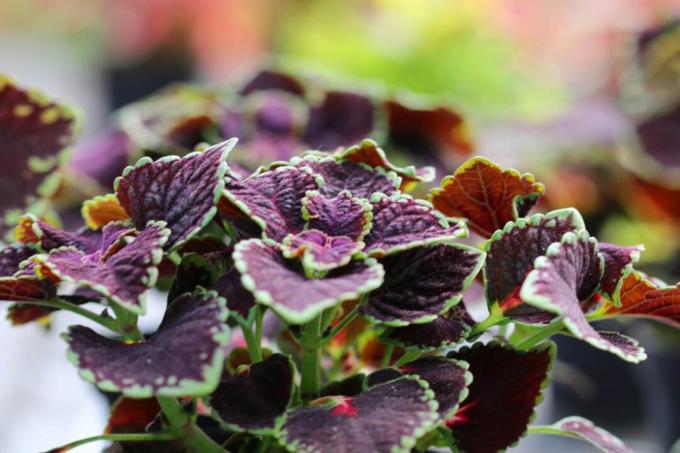
Coleus blumei: 21 tips for the red nettle
The colored nettle is a warmth-loving and easy-care foliage plant. The coloring of the leaves varies from monochromatic to variegated with a wide variety of drawings. Spectacular splashes of color can be set in beds, balcony boxes and tubs or as a houseplant.
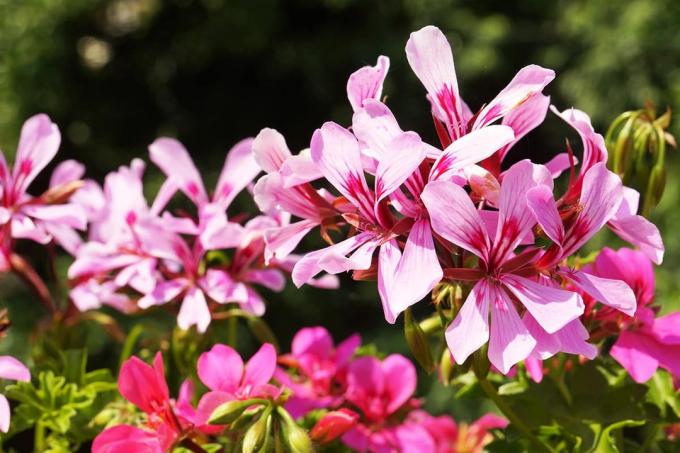
Scented houseplants: 25 scented plants for the home
An apartment without indoor plants is hardly conceivable. Scented plants in particular have a very special effect. Not only are they decorative, they can lighten the mood and rival any artificial home fragrance.

Lucky chestnut, Pachira aquatica: care from A to Z
The care of the lucky chestnut does not require any special expertise. However, if you know the way of life of this ornamental plant, you can better adapt site conditions and care measures to your needs. The plant can be easily propagated if a plant already exists.

Rubber tree: 13 care tips for Ficus elastica
The rubber tree is one of the most popular indoor plants. It is available in different varieties, easy to care for and stands out for its large leaves, which are colored in intense shades of green. Within a few years, it grows into a state small tree without much effort.



